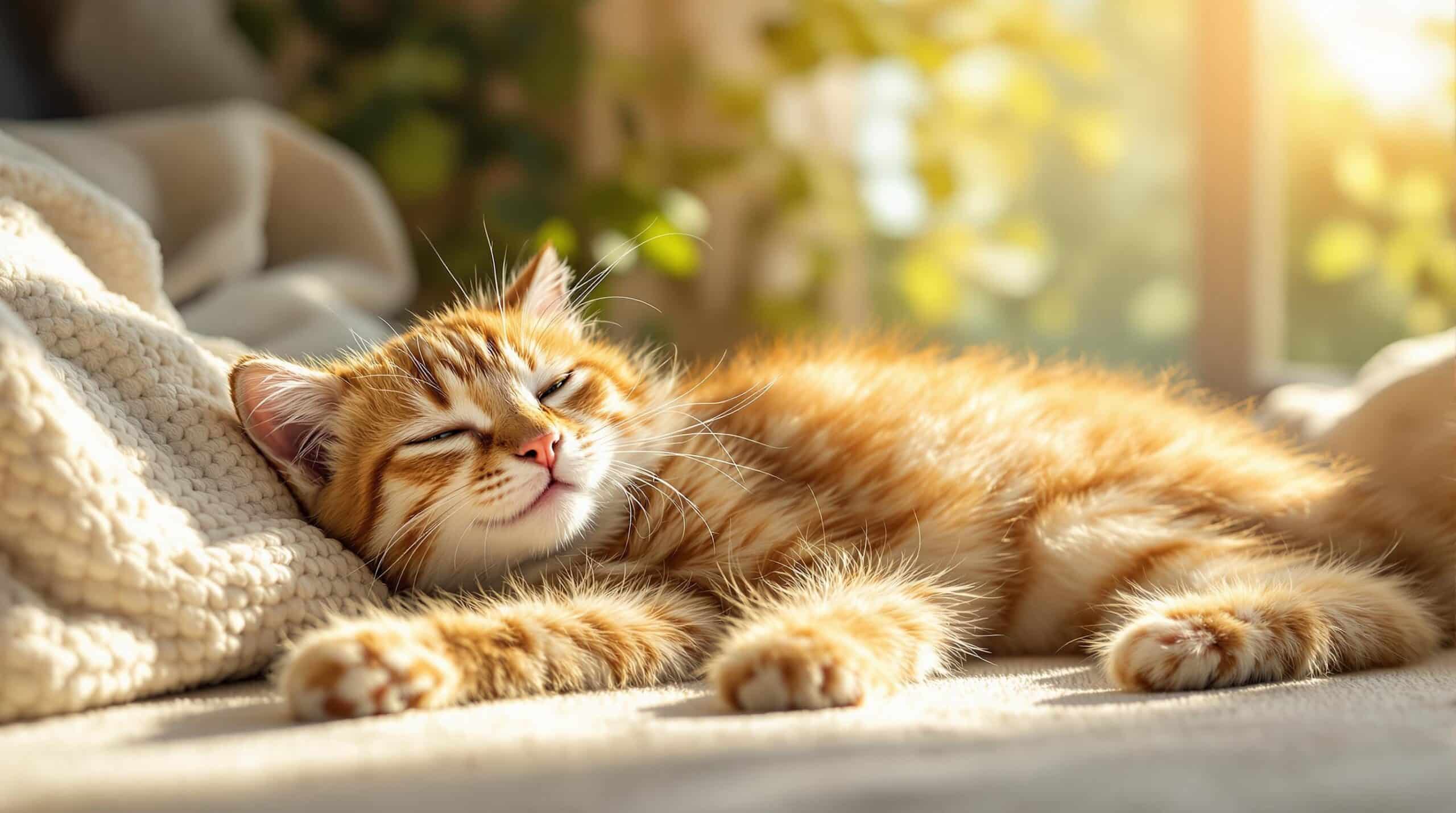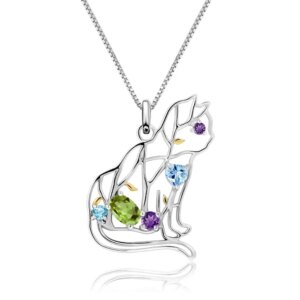Welcome to our comprehensive guide on cats question. Whether you’re a new cat owner or a seasoned feline enthusiast, this article will provide you with valuable insights and answers to common questions. From behavior and health to care and training, we cover it all. Discover expert advice and practical tips to ensure your cat lives a happy and healthy life. By the end, you’ll be equipped with the knowledge to make informed decisions and provide the best care for your furry friend.
Common Cat Behavior Questions
Understanding your cat’s behavior is crucial for a harmonious relationship. Here are some common cat behavior questions and expert answers to help you.
Why do cats purr?
We at Cat Karma Creations know that cats purr for various reasons, including contentment, comfort, and sometimes as a way to self-soothe when they are in pain or stressed. Purring is a low, rumbling sound produced by the rapid vibration of the muscles in the larynx and diaphragm. When your cat purrs, it’s often a sign that they are happy and relaxed, but it can also indicate that they need attention or are in distress. If you notice a change in your cat’s purring behavior, it’s a good idea to consult a veterinarian to rule out any underlying health issues. For more information, feel free to contact us at info@catkarmacreations.com.
How do cats show affection?
Cats have unique ways of showing affection. Some common signs include rubbing against you, headbutting, and kneading with their paws. These behaviors are instinctual and are a way for cats to mark you with their scent, which is a sign of trust and affection. Cats may also show affection by following you around the house or sitting close to you. If your cat is particularly affectionate, it’s a good sign that they feel safe and secure in your presence. For more tips on cat behavior, follow us on Facebook.
What does it mean when a cat kneads?
Kneading is a behavior that cats often exhibit, especially when they are content or feeling affectionate. This action involves rhythmically pressing their paws against a soft surface, such as a blanket, your lap, or even another cat. Kneading is a behavior that cats learn as kittens, and it is associated with the act of nursing. When a kitten kneads its mother’s belly, it stimulates milk production. In adult cats, kneading can be a comforting and calming behavior, and it often indicates that your cat is feeling happy and relaxed. For more insights, visit our website at Cat Karma Creations.
Why do cats scratch furniture?
Scratching is a natural behavior for cats, and it serves several purposes. Cats scratch to mark their territory, as it leaves both visual and scent marks. Scratching also helps to keep their claws sharp and removes the outer layer of the nail. To prevent your cat from scratching furniture, provide them with appropriate scratching posts or pads. Place these near the areas where they tend to scratch, and use catnip or toys to encourage them to use the posts instead. Regular nail trims can also help reduce the urge to scratch. For more tips, check out our cat-themed jewelry for cat lovers.
How can I stop my cat from spraying?
Spraying is a form of marking behavior in cats, and it is more common in unneutered males. Spraying is different from urination, as it involves the cat backing up to a vertical surface and spraying a small amount of urine. To stop your cat from spraying, it’s important to address the underlying cause. This can include stress, territorial disputes, or medical issues. Spaying or neutering your cat can significantly reduce the likelihood of spraying. Additionally, providing a safe and secure environment, using pheromone sprays, and addressing any underlying health issues can help prevent this behavior. If the problem persists, consult a veterinarian or a behaviorist for further guidance. For more advice, follow us on Instagram.
Frequently Asked Cat Health Questions
Maintaining your cat’s health is essential for their well-being. Here are some frequently asked cat health questions and expert advice to help you.
What are common cat health issues?
Cats can experience a variety of health issues, ranging from minor to serious. Some common health problems include dental disease, obesity, urinary tract infections, and hairballs. Dental disease is one of the most prevalent issues, and it can lead to tooth loss and other complications if left untreated. Obesity is another common problem, especially in indoor cats, and it can increase the risk of diabetes, arthritis, and other health issues. Urinary tract infections can cause discomfort and difficulty urinating, while hairballs can lead to digestive problems. Regular vet check-ups and a balanced diet can help prevent these issues. For more information, visit our cat-themed jewelry page.
How often should I take my cat to the vet?
Regular vet check-ups are essential for maintaining your cat’s health. Adult cats should visit the vet at least once a year for a comprehensive exam and necessary vaccinations. Kittens and senior cats may require more frequent visits, as they are more susceptible to health issues. During these visits, your vet can perform a thorough examination, check for signs of illness, and provide preventive care. If you notice any changes in your cat’s behavior or health, it’s important to schedule an appointment with your vet as soon as possible. For more tips, follow us on Pinterest.
What are the signs of a healthy cat?
A healthy cat should have a shiny coat, clear eyes, and a good appetite. They should also be active and playful, with a normal body weight and a healthy weight. Other signs of a healthy cat include regular urination and defecation, good dental hygiene, and no signs of respiratory issues. If you notice any changes in your cat’s behavior or health, such as lethargy, loss of appetite, or difficulty breathing, it’s important to consult a veterinarian. Regular check-ups and a balanced diet can help ensure your cat remains healthy and happy. For more information, visit our nature-inspired jewelry collection.
How can I prevent cat health problems?
Preventing cat health problems involves a combination of good nutrition, regular vet check-ups, and a clean environment. Feeding your cat a balanced diet that meets their nutritional needs can help prevent obesity and other health issues. Regular exercise, such as playtime and interactive toys, can also help keep your cat active and healthy. Maintaining a clean living environment, including regular litter box cleaning and a clean home, can reduce the risk of infections and parasites. Additionally, providing your cat with a stress-free environment and addressing any behavioral issues can help prevent health problems. For more tips, follow us on Twitter.
What should I do if my cat is not eating?
If your cat is not eating, it can be a sign of an underlying health issue. Loss of appetite can be caused by a variety of factors, including stress, illness, or dental problems. If your cat has not eaten for more than 24 hours, it’s important to consult a veterinarian. Your vet can perform a thorough examination to determine the cause of the loss of appetite and provide appropriate treatment. In the meantime, try offering your cat a small amount of wet food or a different type of food to see if they will eat. If your cat continues to refuse food, seek veterinary care immediately. For more advice, visit our sterling silver jewelry collection.
Practical Cat Care Tips
Providing the best care for your cat involves a combination of regular grooming, playtime, and a safe environment. Here are some practical cat care tips to help you.
How often should I groom my cat?
Grooming your cat regularly can help prevent hairballs and skin issues, keeping them comfortable and healthy. The frequency of grooming depends on your cat’s coat type. Short-haired cats typically require grooming once a week, while long-haired cats may need daily brushing to prevent matting. When grooming your cat, use a soft brush or comb to remove loose hair and debris. Check for fleas, ticks, and other parasites, and trim your cat’s nails if necessary. Regular grooming can also help strengthen the bond between you and your cat. For more tips, follow us on Facebook.
What are the best cat toys?
Providing your cat with a variety of toys can help keep them mentally and physically stimulated. Some of the best cat toys include interactive toys, such as teaser wands and puzzle feeders, which encourage play and exercise. Soft toys, such as plush mice and balls, can also be enjoyable for cats. Look for toys that are safe and durable, and avoid toys with small parts that can be easily swallowed. Rotate your cat’s toys regularly to keep them interested and engaged. For more ideas, visit our cat-themed jewelry page.
How can I keep my cat entertained?
Keeping your cat entertained is essential for their mental and physical well-being. In addition to toys, you can provide your cat with scratching posts, climbing trees, and window perches to encourage play and exploration. Interactive play sessions, such as using a laser pointer or a feather wand, can also be a great way to bond with your cat and provide exercise. Consider setting up a play area with different levels and hiding spots to create a stimulating environment. Regular playtime can help reduce stress and prevent boredom, which can lead to behavioral issues. For more tips, follow us on Instagram.
What are the best cat beds?
Choosing the right cat bed can help your cat feel comfortable and secure. Look for beds that are soft, warm, and provide good support. There are many types of cat beds available, including heated beds, orthopedic beds, and cozy igloo beds. Consider your cat’s preferences and needs when selecting a bed. For example, if your cat has joint pain, an orthopedic bed can provide additional support. Place the bed in a quiet, warm area of your home, and make sure it is easily accessible to your cat. For more ideas, visit our cat-themed jewelry collection.
How can I keep my cat safe indoors?
Keeping your cat safe indoors involves creating a secure and stimulating environment. Make sure all windows and doors are securely closed, and cover any gaps or openings that your cat could escape through. Remove any toxic plants or household items that could be harmful to your cat. Provide your cat with plenty of toys, scratching posts, and climbing trees to keep them entertained. Consider installing window perches and cat shelves to give your cat a view of the outdoors. Regular playtime and mental stimulation can help prevent boredom and reduce the risk of destructive behavior. For more tips, follow us on Pinterest.
Effective Cat Training Methods
Training your cat can improve their behavior and strengthen the bond between you and your pet. Here are some effective cat training methods to help you.
Can cats be trained?
Contrary to popular belief, cats can be trained to perform a variety of behaviors and tricks. While cats are independent creatures, they are also intelligent and can learn through positive reinforcement. Training your cat can help improve their behavior, reduce stress, and provide mental stimulation. Start with simple commands, such as “sit” or “come,” and gradually progress to more complex behaviors. Consistency and patience are key to successful cat training. For more tips, visit our nature-inspired jewelry collection.
What are the best cat training techniques?
Positive reinforcement is one of the most effective cat training techniques. This involves rewarding your cat for desired behaviors with treats, praise, or play. Clicker training is another popular method that uses a clicker to mark the exact moment your cat performs the desired behavior, followed by a reward. Consistency and repetition are important, as cats learn through repetition and positive reinforcement. Avoid using punishment or negative reinforcement, as this can cause stress and fear in your cat. For more advice, follow us on Twitter.
How can I teach my cat to use a litter box?
Training your cat to use a litter box is an essential part of cat ownership. Start by placing the litter box in a quiet, easily accessible area of your home. Use a litter that your cat prefers, and keep the litter box clean by scooping it at least once a day. If your cat is not using the litter box, try moving it to a different location or using a different type of litter. Positive reinforcement can also be used to encourage your cat to use the litter box. Praise and reward your cat when they use the litter box, and avoid punishment if they have accidents. For more tips, visit our sterling silver jewelry collection.
What are the best treats for training cats?
Choosing the right treats is important for successful cat training. Look for treats that are small, tasty, and easy to digest. Some popular options include freeze-dried meat treats, tuna flakes, and small pieces of cooked chicken or fish. Avoid using too many treats, as this can lead to weight gain. Use treats sparingly and in combination with praise and play to keep your cat motivated and engaged during training sessions. For more ideas, follow us on Facebook.
How can I stop my cat from jumping on counters?
Jumping on counters can be a common behavior in cats, but it can also be dangerous and unsanitary. To prevent your cat from jumping on counters, it’s important to address the underlying reasons. Cats may jump on counters to explore, find food, or get attention. Provide your cat with alternative climbing and perching areas, such as cat trees or window perches. Use deterrents, such as double-sided tape or aluminum foil, to make the counters less appealing. Consistent reinforcement, such as using a spray bottle or a loud noise, can also help discourage this behavior. Positive reinforcement, such as rewarding your cat for staying off the counters, is also effective. For more tips, visit our cat-themed jewelry page.
| Concept | Common Questions | Expert Advice | Practical Tips | Effectiveness | Nutritional Value |
|---|---|---|---|---|---|
| Cat Behavior | Why do cats purr? | Consult a behaviorist for insights. | Use positive reinforcement. | High | N/A |
| Cat Health | What are common health issues? | Regular vet check-ups are essential. | Maintain a clean environment. | High | N/A |
| Cat Care | How often should I groom my cat? | Grooming reduces hairballs and skin issues. | Brush regularly and check for fleas. | High | N/A |
| Cat Training | Can cats be trained? | Cats can learn commands and tricks. | Use treats and clicker training. | Moderate | N/A |
| Cat Diet | What is the best diet for cats? | Consult a vet for dietary recommendations. | Provide a balanced diet. | High | High |
Understanding cat behavior is crucial for a harmonious relationship with your pet. Regular vet check-ups are essential for maintaining your cat’s health and catching issues early. Grooming your cat regularly can prevent hairballs and skin problems, keeping them comfortable. Training your cat can improve their behavior and strengthen the bond between you and your pet. Providing a balanced diet is key to your cat’s overall health and well-being. Adopting a cat can be a rewarding experience, but it requires preparation and commitment. For more information and unique cat-themed gifts, visit our website at Cat Karma Creations. Follow us on social media to stay updated and inspired.
Popular Quote
“A cat has absolute emotional honesty; human beings, for one reason or another, may hide their feelings, but a cat does not.”
— Ernest Hemingway
Statistical Fact
According to the American Veterinary Medical Association, approximately 94.2 million cats are owned as pets in the United States, making them one of the most popular household pets. This statistic highlights the widespread love and companionship that cats provide to their owners. For more information, visit the AVMA website.
Three Tips for Cat Owners
- Regular Vet Check-Ups: Ensure your cat receives regular veterinary check-ups to catch and address health issues early. This is crucial for maintaining their overall well-being.
- Interactive Playtime: Engage your cat in regular play sessions to keep them mentally and physically stimulated. Interactive toys and games can help reduce stress and prevent boredom.
- Safe Environment: Create a safe and secure environment for your cat by removing toxic plants, securing windows and doors, and providing plenty of toys and perches. This helps prevent accidents and promotes a happy, healthy lifestyle.
Popular Questions
- What is the best way to introduce a new cat to my home? Introduce new cats gradually and in a controlled environment. Use separate spaces and gradually increase interaction, supervised by you, to ensure a smooth transition.
- How can I stop my cat from scratching furniture? Provide your cat with appropriate scratching posts or pads, and use catnip or toys to encourage them to use these instead. Regular nail trims can also help reduce the urge to scratch.
- What are the signs of a healthy cat? A healthy cat should have a shiny coat, clear eyes, and a good appetite. They should also be active and playful, with regular urination and defecation, and no signs of respiratory issues.
- How can I train my cat to use a litter box? Place the litter box in a quiet, accessible area and use a litter that your cat prefers. Keep the litter box clean and use positive reinforcement to encourage your cat to use it.
- What are the best treats for training cats? Choose small, tasty treats that are easy to digest, such as freeze-dried meat treats or small pieces of cooked chicken. Use treats sparingly and in combination with praise and play to keep your cat motivated.
Final Thoughts About Cats Question
In conclusion, understanding and addressing cats question is essential for a happy and healthy feline companion. By exploring common behavior, health, care, and training questions, you can provide the best possible environment for your cat. Whether you’re a new owner or a seasoned enthusiast, this guide offers valuable insights and practical tips. For more information and unique cat-themed gifts, visit our website at Cat Karma Creations. Follow us on social media to stay updated and inspired. If you have any questions or need custom designs, feel free to contact us at info@catkarmacreations.com or call us at (800) 343-1604.















